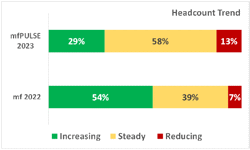
When I worked in the circulation department of a B2B publisher in the early nineties, everything was very self-contained. Heads down and get on with it. The only time we came across editorial colleagues was in the corridor or at the Christmas party. We saw a bit more of the commercial team, as they occasionally put their head around the door to check whether so and so was on the circulation list or to request extra copies be delivered for a big do at the NEC.
Editorial, sales and circulation could have been based on different planets and it wouldn’t have made much difference. We all knew what we had to do and got on with it. There was no great need for any of us to talk to each other.
How things have changed.
One of the key takeaways from our special feature on ‘new subscriber acquisition’, is that these three pillars of the business are now closely intertwined.
Circulation (aka audience) relies on editorial to provide the content that draws potential prospects in, nurtures them along the journey to the point they subscribe. But it doesn’t end there. Subscriber retention relies on editorial continuing to deliver high quality content and audience teams feel increasingly, and rightly, emboldened to give editorial teams their advice about what does and doesn’t work, based on their in-depth understanding of reader behaviour.
Whilst, once upon a time, editorial teams might have told them where to put their advice, they now welcome it, or at least should.
Similarly, the growth in native advertising as a proportion of commercial revenues also sees editorial teams working hand in glove with commercial teams in a way that would have been unimaginable twenty years ago, when the church state divide was seen as unbridgeable.
In the pre-digital world, what a reader thought of a publication was a matter of conjecture. Sales figures, gut feel and the occasional reader survey was all publishers had to go on and the time lag in getting even this paltry information made it a blunt tool. The connectedness of the digital publishing world has changed all that and we now have the ability to tell who is reading each article, how long they read it for and what else they’ve read.
The availability of this gold-dust information which simply was not available to publishers twenty or so years ago binds editorial, circulation and sales ever more closely together. Cause and effect are instantly analysable and the knock on effect of a change made by one part of the business on all other parts of the business can be seen in real time.
The result is a much more collaborative approach to publishing as all parts of the publishing business become aware of their dependence on each other.
That is incredibly exciting and liberating. It increases understanding of each other’s goals, skills and needs and facilitates a culture of continuous improvement. If everyone is constantly talking with each other, then forward momentum is almost unavoidable!
It also makes for a flatter and more agile organisational structure as the old hierarchy gets dismantled and each team becomes aware of the vital role each other performs and everyone works harmoniously together.
The result is a much more collaborative approach to publishing.
This article was first published in InPublishing magazine. If you would like to be added to the free mailing list, please register here.










